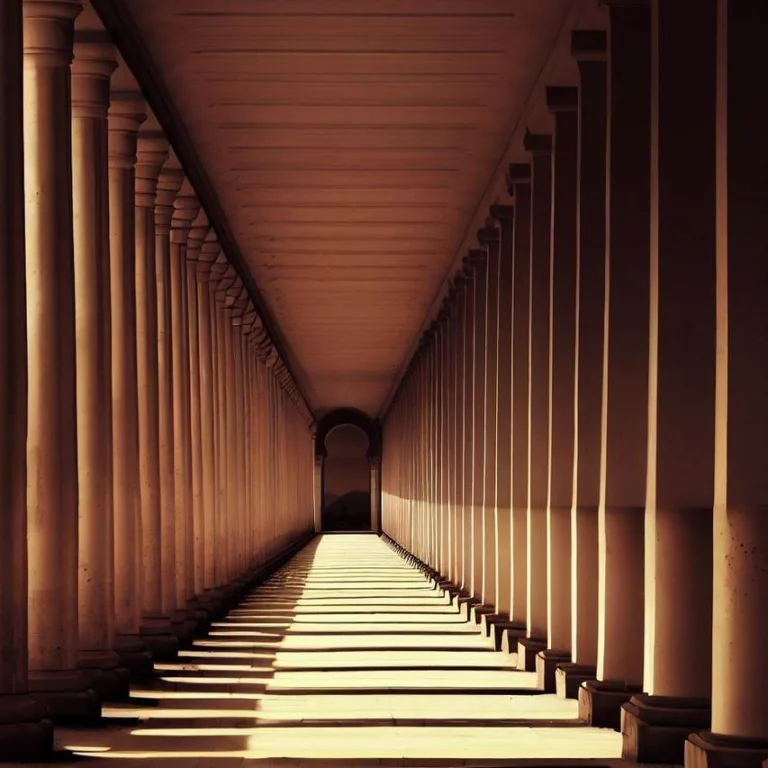Welcome to our comprehensive guide on the architectural wonder known as the colonnade. In this article, we will delve deep into the history, design, significance, and examples of colonnades in various parts of the world. From ancient temples to modern landmarks, the colonnade has stood as a symbol of elegance and grandeur throughout the ages.
The elegance of colonnades
Colonnades, with their graceful rows of columns, have been an integral part of architecture for centuries. They are not merely structural elements but also artistic expressions that create a lasting visual impact. These architectural marvels can be found in diverse settings, from religious and civic buildings to palaces and public squares. The design of a colonnade often reflects the aesthetics and ideologies of the era in which it was built.
A glimpse into history
The origin of colonnades can be traced back to ancient civilizations. The Greeks, known for their architectural prowess, employed colonnades extensively in their temples and public spaces. The iconic Parthenon in Athens features a Doric colonnade that has become a symbol of classical architecture.
Roman architecture, influenced by the Greeks, further embraced the colonnade style. The Colosseum, a monumental amphitheater, boasts an outer colonnade that not only adds to its grandeur but also serves a functional purpose by facilitating crowd movement.
Design and types
Colonnades come in various designs and styles, each with its own unique charm. The three main types of columns that form the basis of colonnades are Doric, Ionic, and Corinthian. The Doric column is sturdy and plain, representing strength. The Ionic column is more ornate, featuring distinctive scrolled capitals. The Corinthian column is the most decorative, adorned with intricate acanthus leaves.
Colonnades can be freestanding, forming a separate structure, or engaged, where the columns are partially attached to a wall. They can also be single-story or multi-story, adding depth and dimension to the architecture.
Symbolism and significance
Colonnades are more than just architectural features; they often carry symbolic meaning. In many cultures, they represent power, authority, and the connection between human and divine realms. The act of walking through a colonnade can evoke a sense of reverence and awe, making it a popular choice for religious and ceremonial spaces.
Furthermore, colonnades provide shade and shelter, making them practical as well as aesthetic elements. The interplay of light and shadow between columns creates a captivating visual spectacle, enhancing the overall experience for visitors.
Global examples
Colonnades have transcended time and geography, leaving their mark on cities around the world. From the historic St. Peter’s Square in Vatican City, adorned with a majestic colonnade designed by Gian Lorenzo Bernini, to the iconic Lincoln Memorial in Washington, D.C., featuring a Doric colonnade that symbolizes strength and unity, these structures continue to captivate and inspire.
Modern architecture also pays homage to the timeless beauty of colonnades. The Sydney Opera House’s Forecourt Colonnade seamlessly blends contemporary design with classical elements, showcasing the enduring appeal of this architectural style.
Frequently Asked Questions (FAQs)
What is the purpose of a colonnade?
Colonnades serve both practical and symbolic purposes. They provide shelter and shade, facilitate movement, and create visually stunning spaces. Symbolically, they often represent power, authority, and a connection to the divine.
What are the main types of columns used in colonnades?
The main types of columns used in colonnades are Doric, Ionic, and Corinthian. Doric columns are plain and sturdy, Ionic columns are ornate with scrolled capitals, and Corinthian columns are highly decorative with intricate foliage.
Are colonnades only found in ancient architecture?
No, colonnades are not limited to ancient architecture. They have been used throughout history and continue to be incorporated into modern architectural designs, seamlessly blending classical elegance with contemporary aesthetics.
What role do colonnades play in modern architecture?
Modern architecture often uses colonnades to pay homage to historical styles while infusing a sense of timelessness into new structures. Colonnades add visual interest, depth, and symbolism to modern buildings and public spaces.
Conclusion
In conclusion, the colonnade stands as a testament to the harmonious blend of art and engineering in architecture. From its historical origins in ancient civilizations to its modern interpretations, the colonnade remains a captivating and enduring architectural element. Its elegance, symbolism, and significance continue to leave a lasting impression on both the built environment and the human experience.
Viz také:






